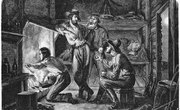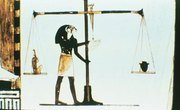In “To Kill a Mockingbird,” Harper Lee tells the story of Atticus Finch, a widowed attorney, and his children, Scout and Jem, who live in Maycomb, Alabama during the Great Depression. Grumpy old Mrs. Dubose lives down the street. Mrs. Dubose illustrates the novel’s theme -- people aren’t always what they seem. They may be better, worse or have redeeming qualities if we look beyond the surface. With guidance from Atticus, we may reframe Mrs. Dubose from a heartless, repulsive, traditionalist and racist to a courageous fighter.
Heartless
Mrs. Dubose initially intimidates Scout and Jem. She seemed perpetually old, intent on uncovering mischief and apparently convinced that no good comes from Finch folly. Scout, our narrator, puts it this way: “Jem and I hated her. If she was on the porch when we passed, we would be raked by her wrathful gaze, subjected to ruthless interrogation regarding our behavior, and given a melancholy prediction on what we would amount to when we grew up, which was always nothing."
Repulsive
Scout finds Mrs. Dubose's appearance as repulsive as her observations. “Cords of saliva would collect on her lips; she would draw them in, then open her mouth again. Her mouth seemed to have a private existence of its own. It worked separate and apart from the rest of her, out and in, like a clam hole at low tide. Occasionally it would say, 'Pt,' like some viscous substance coming to a boil."
Traditionalist
Mrs. Dubose holds fast to the traditions of the Old South, particularly regarding guns, women and minorities. The children fear the loaded pistol Mrs. Dubose packs under her shawls and wraps. Mrs. Dubose observes Scout’s tomboy overalls and draws unflattering conclusions about her future. “‘What are you doing in those overalls? You should be in a dress and camisole, young lady! You’ll grow up waiting on tables if somebody doesn’t change your ways."
Racist
When Atticus defends Tom Robinson, a black man accused of raping a young white woman, Mrs. Dubose venomously disapproves. Jem retaliates by cutting off all the tops of Mrs. Dubose’s camellias. For his punishment, Mrs. Dubose orders Jem to read to her. She uses an alarm clock to signal the time he may stop, but to Jem’s horror, she extends the time the alarm is set to ring. Unbeknownst to Jem, the alarm also signals the time for her next dose of morphine.
Reconsidered
Later, Atticus explained Jem’s punishment, reading to Mrs. Dubose, served to distract the old woman so she could die free of morphine while battling against a serious illness. "I wanted you to see something about her -- I wanted you to see what real courage is, instead of getting the idea that courage is a man with a gun in his hand. It's when you know you're licked before you begin but you begin anyway and you see it through no matter what."
Courageous
Atticus helps Jem and Scout see beyond her drool and malevolence. Mrs. Dubose, according to Atticus, was a brave lady who always spoke her mind and attempted to achieve her goals. Jem begrudgingly learns to admire Mrs. Dubose and the camellia she left him. “You rarely win, but sometimes you do. Mrs. Dubose won, all ninety-eight pounds of her. According to her views, she died beholden to nothing and nobody. She was the bravest person I ever knew."
Fighter
Mrs. Dubose's addiction to morphine symbolizes the hold racism has on the South during the time period of the novel. She strives to restore herself and her traditional Southern values. Figuratively, the drug-induced stupor of Mrs. Dubose illustrates the South's refusal to own and overcome its prejudice. Mrs. Dubose works to eradicate the morphine from her body and thus models the vigilant approach we need to address social injustice, even if that was never her intent.
Related Articles
References
Writer Bio
Stanley Jacob Gajda earned a PhD in higher education from the University of North Carolina at Greensboro. He also studied at Bowling Green and Ohio State University. Dr. Gajda writes on socially responsible leadership in and out of the classroom. His work has resulted in documented increases in student engagement, workforce efficiency and program funding.











